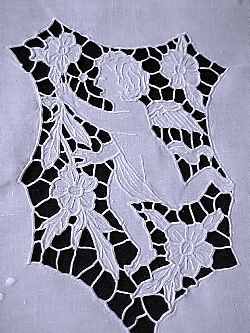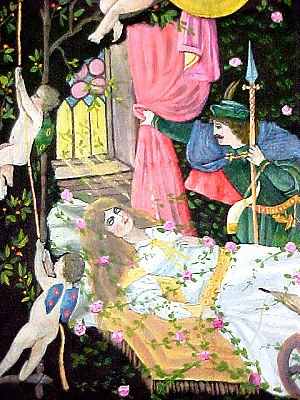|
shadoW0W
 |
Linens, Lace, Hankies, Home Decor, Etc. Etc.!
What Is A Cherub?
Cherubs Yesterday & Today
|
shadoW0W
 |
What Is A Cherub?
Cherubs Yesterday & Today
 |
The name "cherubim", masculine, plural, was assimilated into the Hebrew language from the Assyrian "kirubu" or "karabu", meaning "to be near loved ones, personal servants, heavenly spirits who closely surrounded God and paid him personal service."
Cherubs appear frequently in the Old Testament, where, as the second order of angels, they act as guardians of paradise, messengers and winged carriers of the chariots of God. The cherub was said to have four faces: man, lion, ox and eagle....so that he could assume wisdom, fearlessness, strength or soaring speed according to the situation.
Cherubs gained widespread popularity during the Victorian era. Character and image underwent subtle changes, more in keeping with the original Assyrian concept. They were portrayed as loving assistants, protectors of sacred places and persons, particularly of beautiful, virtuous young women and innocent children. The cherub was incorporated into designs of all kinds...on plates, linens, silverware, sculpture, paintings, etc. He was shown as a younger, more loveable being. Gift-giving customs included cherubs embroidered on honeymoon and baby linens.
 |
|
Webster's dictionary defines cherub as "a winged celestial being, winged child with innocent, chubby face." And that is the cherub we love today. A gift or card showing a cherub implies loving, protective feelings.
Hearts-Desires.com displays a fresh and interesting array of linens with lace and embroidered cherubs. The illustrations on this page show a few available at the time of writing.
Updated 01/05/23